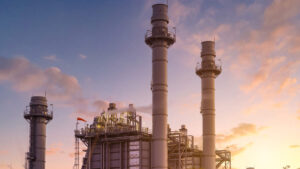LNG earnings tipped to rise after lacklustre year

Pic: Vertigo3d / E+ via Getty Images
Iron ore has been joined by liquefied natural gas (LNG) as the Australian commodities that China continues to buy in bulk despite its political posturing.
In its latest report, EnergyQuest found that China had overtaken Japan as the top export destination for our super-cooled gas in the 2021 financial year with 29.8Mt of LNG shipped.
This is up very slightly from 29.4Mt in the previous financial year though the consultancy noted that Australia’s market share actually fell from 46% to 41%.
Our inability to fully participate in China’s market growth is due to projects being fully contracted and the lack of new projects entering production.
Japanese imports fell from 30.5Mt in FY2020 to 28Mt in FY2021 while South Korean imports were down from 8.9Mt to 8Mt.
EnergyQuest added that Australia exported a total of 77.2Mt in the 12 months to 30 June 2021, down slightly from 79.5Mt the previous year.
This is due to ongoing maintenance required at Gorgon to repair cracking in the cooling kettles, production issues at Prelude, Ichthys and Wheatstone, along with reduced field supply at the North West Shelf and COVID-19 related disruptions.
In June, Australian projects shipped 5.85Mt of liquefied gas, up from 5.82Mt the previous month.
While production from QCLNG, NWS and Ichthys were down, Shell’s Prelude floating LNG project produced at its nameplate capacity for the first time since operations began June 2019.
Rising LNG export income
LNG generated $30.28bn in export revenues during FY2021, slightly lower than the federal government’s forecast of $32.33bn and well down from the $47.5bn it made in the past financial year.
The fall in income is attributed largely to the fall in oil prices earlier in the financial year.
However, the rise in oil prices this year is expected to benefit Australia’s LNG sector.
The three-month lagged Japanese Customs Cleared (JCC) oil price, to which most Australian contracts are indexed, bottomed out in September at $34.10 per barrel and have since climbed up to $80.66/bbl in June.
Reflecting this increase, Woodside Energy (ASX:WPL) noted that its average realised prices had risen by 42% from US$5 per million British Thermal Units (MMBtu) in the second quarter of 2022 to US$7.10/MMBtu in the second quarter of 2021.
With EnergyQuest forecasting that Australia will produce about 80Mt of LNG this financial year, export revenues could hit $47bn using an average oil price of US$70/bbl.
Though this is lower than the Australian government’s forecast that FY2022 LNG revenue will hit $49.03bn, it is still a big increase from FY2021.
Related Topics

UNLOCK INSIGHTS
Discover the untold stories of emerging ASX stocks.
Daily news and expert analysis, it's free to subscribe.
By proceeding, you confirm you understand that we handle personal information in accordance with our Privacy Policy.








